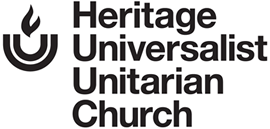by Mike Roberts, Church Historian
In 1922, the Cincinnati Enquirer ran a lengthy article describing the origins of public education in the city. In that article they identify John Hilton as the father of public education in Cincinnati.
Hilton was born in 1782 in Maine, the descendent of settlers who came to the New World from London, England, in 1623. At the age of 18, Hilton moved west to the frontier town on the banks of the Ohio River “fully imbued with the idea of seeing a public education system established.” He quickly found employment as a teacher in a subscription school, that being a private school where families paid for their children’s education. However, he also started working towards the creation of public education in his newly adopted home of Cincinnati. In the words of his daughter, Emma, Hilton’s efforts were “met with a very poor reception from many men of wealth, who called him a fool, said they were not going to spend their money to send poor men’s children to school. They even burned him in effigy to show their dislike for him and the cause he was so much dedicated in.” It took Hilton and his followers a total of 19 years to bring the dream to fruition when the state legislature passed a law authorizing taxation for the purpose of educating all children. Hilton’s group was given the responsibility of creating a public school system in Cincinnati.
The Enquirer goes on to state that “Mr. Hilton’s name was among those of the founders of the Universalist Church in Cincinnati. He loved the church and its ordinances and gave them his earnest support up to the last day of his life. He was in touch a hundred years ago with George Redding, from Maryland, who was the first Universalist preacher here. Mr. Redding worked at his trade of dyer and scourer on Third, between Main and Sycamore Streets. Later, Mr. Hilton was a constant attendant at services held by his friend, Rev. George Rogers, at the First Universalist Church edifice, on the west side of Walnut between Fourth and Third. Mr. Rogers had come over from England following the teachings of John Murray and James Relly. Later he came under the influence of the eloquent Hosea Ballou of New Hampshire. Mr. Rogers was succeeded in that church by the fiery orator, John A. Gurley.
Mr. Hilton’s death was referred to at length in the The Star In The West, a Universalist publication of September 6, 1862, the editors and publishers of which were H. R. Nye and G. L. Demarest, successors to John A. Gurley. The heading of the article “Death of Father Hilton,” gives indication for the general respect for the deceased. It contains direct reference to his efforts in connection with William Cary and Nathan Guilford toward founding the system of public schools.
Mr. Hilton taught school for 40 years, the last half of which was spent in the public school system he founded. He married Margaret Lamborn, an orphan, in 1819, and they raised a family of ten children including the youngest, Emma, who also was a teacher in the Cincinnati school system.
